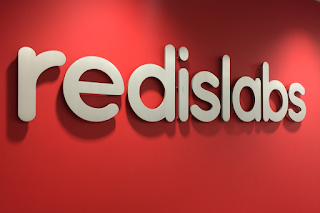Redis Labs, the home of Redis and provider of Redis Enterprise, raised $60 million in Series E financing led by a new investor, Francisco Partners, a leading global technology-focused private equity firm.
 Redis Labs was founded in 2011 by Ofer Bengal (CEO) and Yiftach Shoolman (CTO) around the promise of open source Redis, to deliver instant experience to modern applications at any scale, by building their datasets with native data structures and serving their applications requests directly from memory. In July 2015, Salvatore Sanfilippo, the creator of Redis, joined the company as leader of open source development. The company has now raised $146 million in total funding to-date. With these funds, the company plans to accelerate its global go-to-market execution, invest further in the enthusiastic Redis community, and continue its leadership in delivering the highest performing, most efficient database platform for modern applications.
Redis Labs was founded in 2011 by Ofer Bengal (CEO) and Yiftach Shoolman (CTO) around the promise of open source Redis, to deliver instant experience to modern applications at any scale, by building their datasets with native data structures and serving their applications requests directly from memory. In July 2015, Salvatore Sanfilippo, the creator of Redis, joined the company as leader of open source development. The company has now raised $146 million in total funding to-date. With these funds, the company plans to accelerate its global go-to-market execution, invest further in the enthusiastic Redis community, and continue its leadership in delivering the highest performing, most efficient database platform for modern applications.
The latest funding round included participation by the company’s existing investors, Goldman Sachs Private Capital Investing, Bain Capital Ventures, Viola Ventures and Dell Technologies Capital. With this investment, Francisco Partners’ Chief Investment Officer David Golob will join the Redis Labs Board of Directors and Operating Partner Eran Gorev will join as a board observer.
“The impact of the Redis platform is being experienced everywhere as enterprises look to modernize or build new applications,” said Ofer Bengal, co-founder and CEO at Redis Labs. “This financing enables us to accelerate our strategy to deliver the fastest and most efficient database to the world and enable instant experiences for any modern application.”

The user experience is the ultimate test of network performance. For many applications, this often comes down to the lag after clicking and before the screen refreshes. We can trace the packets back from the user's handset, through the RAN, mobile core, metro transport, and perhaps long-haul optical backbone to a cloud data center. However, even if this path traverses the very latest generation infrastructure, if it ends up triggering a search in...













